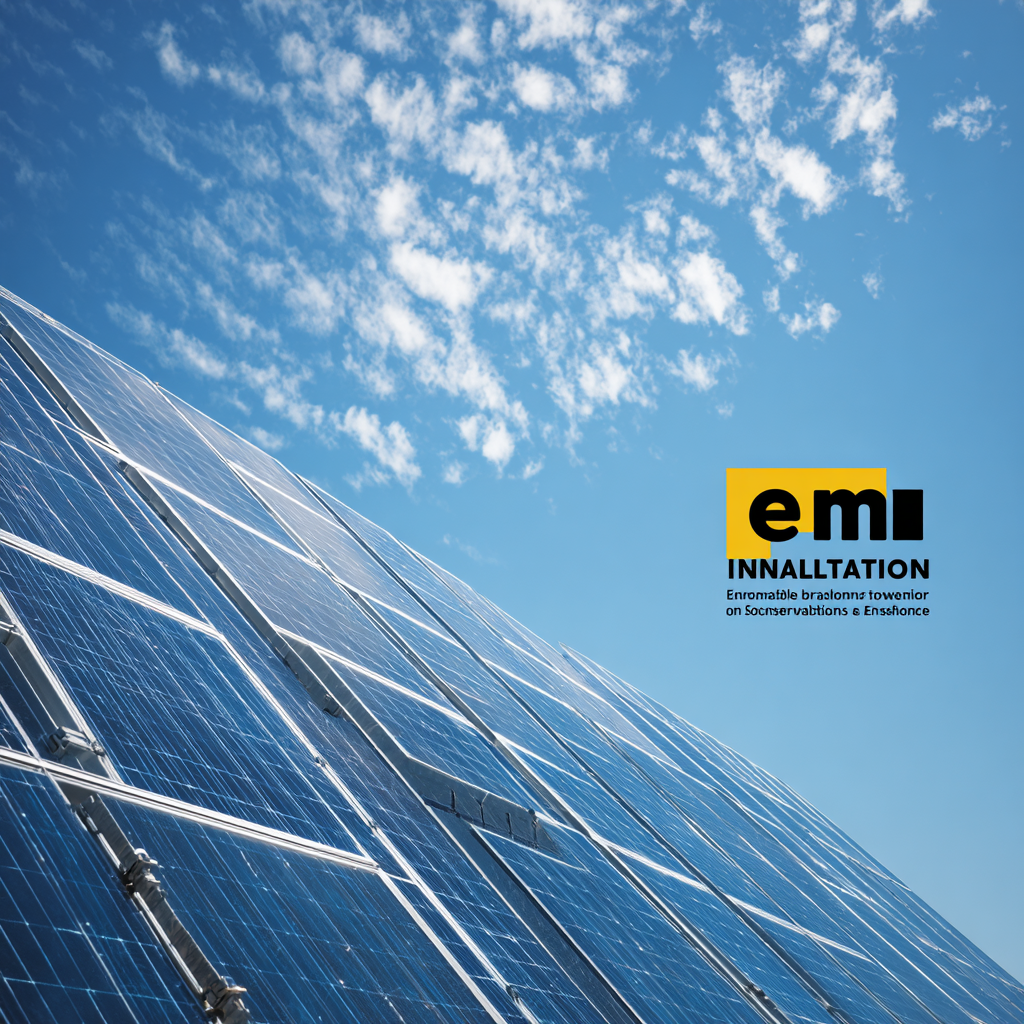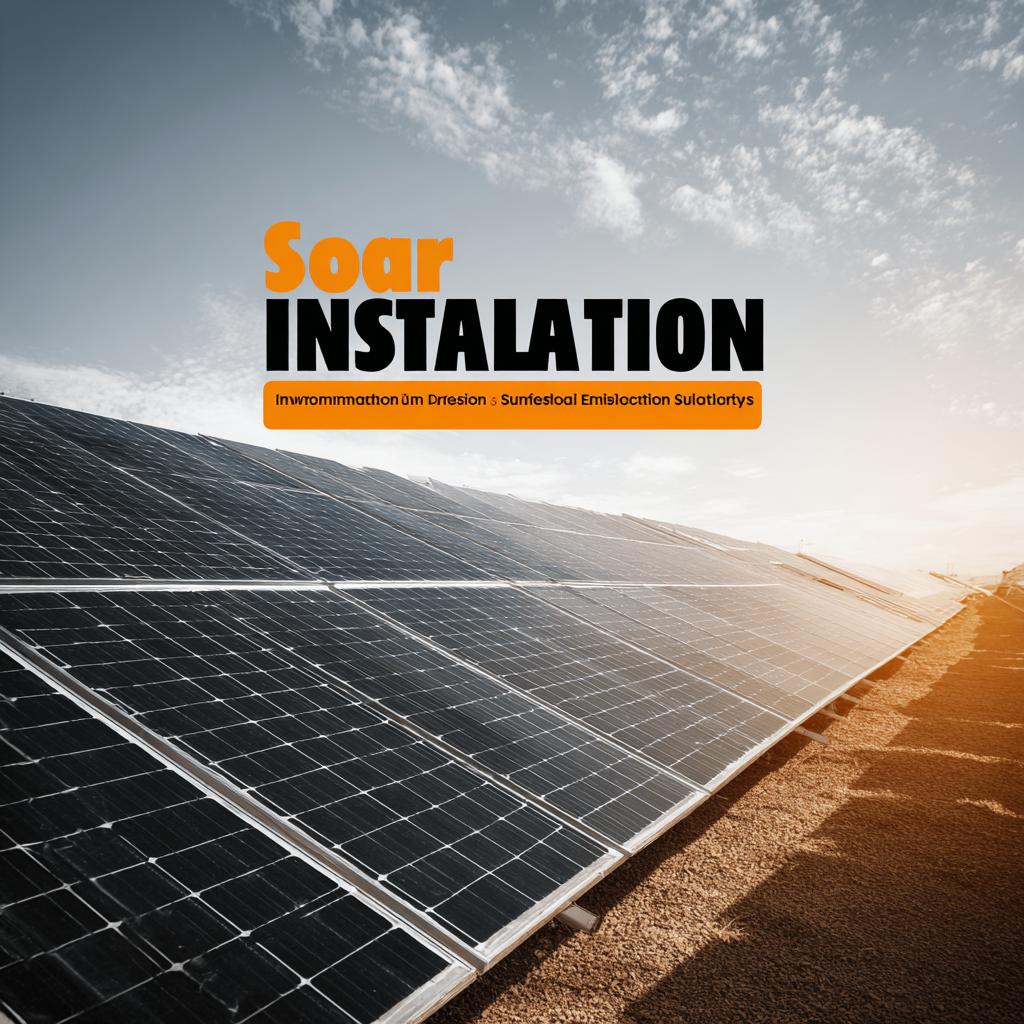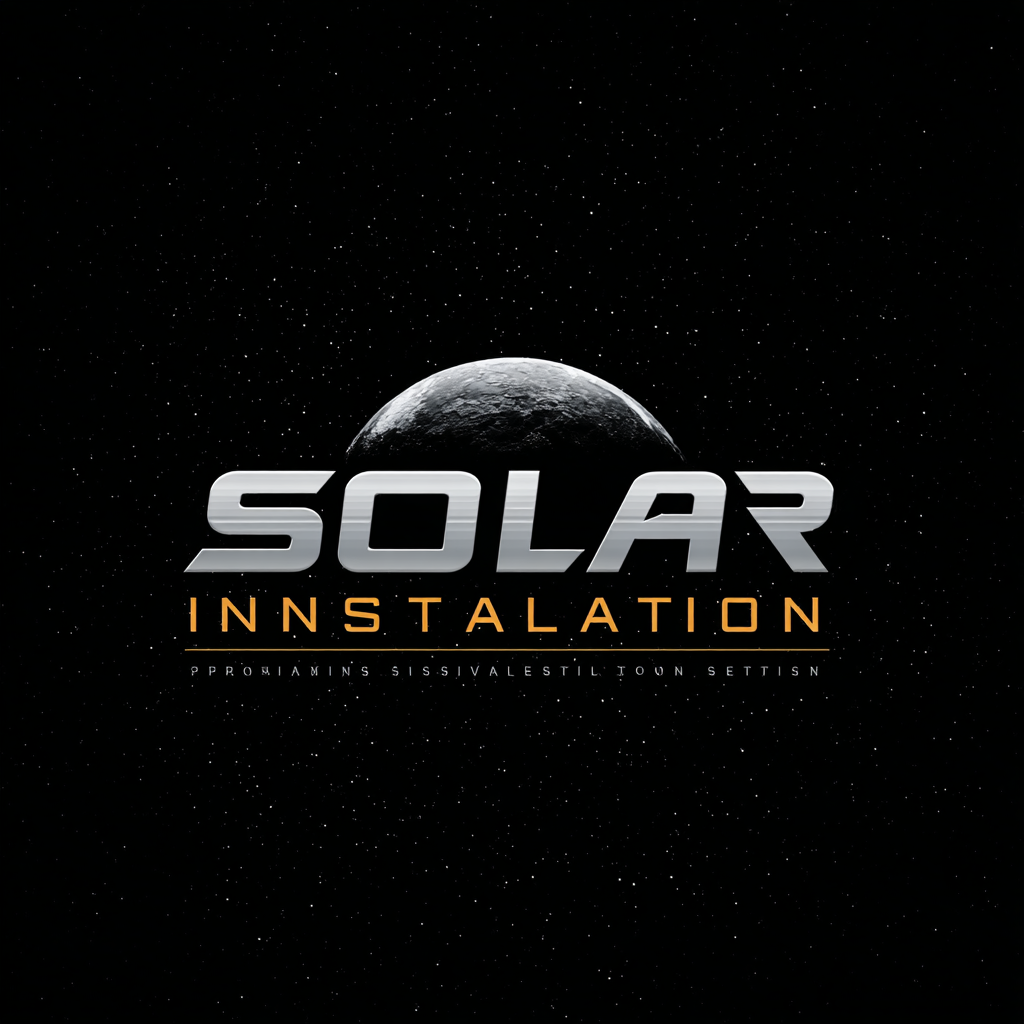As we stride into an era defined by sustainability and innovative energy solutions, the significance of efficient solar installation cannot be overstated. With rapid advancements in technology and design, homeowners and businesses alike are increasingly embracing solar energy as a viable alternative to conventional power sources. This blog delves into the latest innovations in solar installation that not only enhance energy efficiency but also deliver long-term benefits through improved after-sales service and reduced maintenance costs. Understanding the evolving landscape of solar installation equips consumers with the knowledge to make informed decisions, ensuring that they harness the full potential of renewable energy for a brighter, more sustainable future. Join us as we explore the transformational role of solar installation in shaping energy solutions tomorrow.

The solar energy industry has been undergoing a remarkable transformation, primarily driven by innovative technologies that revolutionize installation techniques. One such breakthrough is the development of solar panel systems that incorporate modular designs. These systems allow for faster assembly and disassembly, significantly reducing labor costs and installation time. Furthermore, advancements in mounting solutions have enabled installations on varied terrains and roofs, making solar accessible to a broader range of properties, from urban skyscrapers to rural homes.
Additionally, the integration of smart technology into solar installations has opened new avenues for efficiency and optimization. Smart inverters, for instance, dynamically adjust to changing weather conditions and energy demands, ensuring that solar energy is utilized most effectively. Alongside this, new software tools are facilitating virtual assessments and real-time monitoring of solar systems, allowing installation teams to identify potential issues before they arise. These innovations not only enhance performance but also provide consumers with greater transparency, making it easier to track their energy savings and environmental impact. As these technologies continue to evolve, they promise to make solar energy a more viable and attractive option for everyone.
 The integration of smart grids is revolutionizing the efficiency of solar energy systems, making them more reliable and sustainable. As the global demand for clean energy escalates, particularly driven by electric vehicles and consumer electronics, the deployment of advanced grid technologies is becoming crucial. The ability of smart grids to manage, distribute, and optimize solar energy generation helps address the intermittency issues associated with renewable sources, ensuring a more stable energy supply that can adapt to fluctuating demands.
The integration of smart grids is revolutionizing the efficiency of solar energy systems, making them more reliable and sustainable. As the global demand for clean energy escalates, particularly driven by electric vehicles and consumer electronics, the deployment of advanced grid technologies is becoming crucial. The ability of smart grids to manage, distribute, and optimize solar energy generation helps address the intermittency issues associated with renewable sources, ensuring a more stable energy supply that can adapt to fluctuating demands.
Recent advancements illustrate how modernizing energy infrastructure can enhance the utilization of solar power. Countries like Malaysia are making significant investments to integrate renewable energy resources into the grid, harnessing smart technologies to bolster their transition to a green economy. This integration not only facilitates the efficient distribution of solar energy but also fosters innovations in energy storage solutions. As battery prices continue to decline rapidly, the coupling of solar installations with smart grids and energy storage systems enables a reliable energy ecosystem that reduces dependence on fossil fuels and promotes sustainability.
Across the globe, communities are witnessing transformative changes thanks to innovative solar installations. From urban neighborhoods to rural areas, successful case studies show how solar power not only reduces energy costs but also enhances the quality of life. For instance, a community in California installed solar panels on the rooftops of local schools, drastically cutting down electricity bills and allowing savings to be redirected towards educational resources. This initiative not only promoted sustainable energy but also engaged students in hands-on learning about renewable resources, demonstrating how solar power can be educational and economically beneficial.
When considering solar installations for your community, here are a few tips to maximize impact. First, conduct a thorough needs assessment to understand the energy requirements and potential savings for your locality. Engaging in community discussions can help garner support and attract funding. Additionally, partnering with local solar companies ensures that installations are tailored to meet the specific needs of the community while promoting local economic growth. Effective communication about the benefits of solar can also boost community participation in these sustainable initiatives.
| Community | Solar Installation Type | Capacity (kW) | CO2 Reduction (tons/year) | Energy Savings ($/year) | Project Year |
|---|---|---|---|---|---|
| Community A | Rooftop Solar Panels | 50 | 45 | $10,000 | 2021 |
| Community B | Community Solar Farm | 200 | 180 | $25,000 | 2020 |
| Community C | Solar Canopy | 75 | 60 | $12,000 | 2019 |
| Community D | Agricultural Solar Installation | 150 | 135 | $20,000 | 2022 |
| Community E | School Solar Project | 100 | 90 | $15,000 | 2023 |
Sustainable materials are increasingly becoming a focal point in the solar panel production industry as we approach 2032, with significant advancements projected. The global solar backend market is expected to grow from $3.26 billion in 2025 to $4.64 billion by 2032, with a compound annual growth rate (CAGR) of 5.17%. This growth underscores the importance of innovative materials and technologies that can enhance the efficiency and sustainability of solar panels, paving the way for a greener future.
In Germany, the rise of balcony solar panels is a testament to this trend, as they offer an accessible means for urban dwellers to harness solar energy. This localized approach not only reduces energy costs for consumers but also promotes sustainable living in densely populated areas. Education and innovation are vital in driving the widespread adoption of these technologies, as they empower individuals to make environmentally conscious choices while benefiting from cost savings. The combination of convenient design and sustainable materials signifies a revolution in how we approach energy consumption and production, making solar energy more integrated and essential in our daily lives.
The solar energy sector is at the forefront of driving sustainable solutions; however, it faces several challenges that need addressing to maximize its potential. According to the International Energy Agency (IEA), global solar photovoltaic (PV) capacity is expected to reach over 1,600 gigawatts (GW) by 2025, highlighting the surge in interest in solar installations. One of the primary challenges is the significant upfront cost of installation, which can deter homeowners and businesses from making the switch to solar energy. A report by the National Renewable Energy Laboratory (NREL) reveals that simplifying financing options and providing incentives can greatly enhance accessibility and affordability.

Another critical obstacle in solar installation is the complexity of integrating these systems into existing energy grids. A 2022 study from the U.S. Department of Energy emphasizes that better grid management and updated infrastructure are essential to accommodate the rising influx of solar energy. Solutions such as smart grid technology and energy storage systems are vital for ensuring that solar energy can effectively meet demand and enhance reliability. By overcoming these hurdles through innovative solutions and strategic investment in technology, the solar industry can pave the way for a more sustainable energy future.
